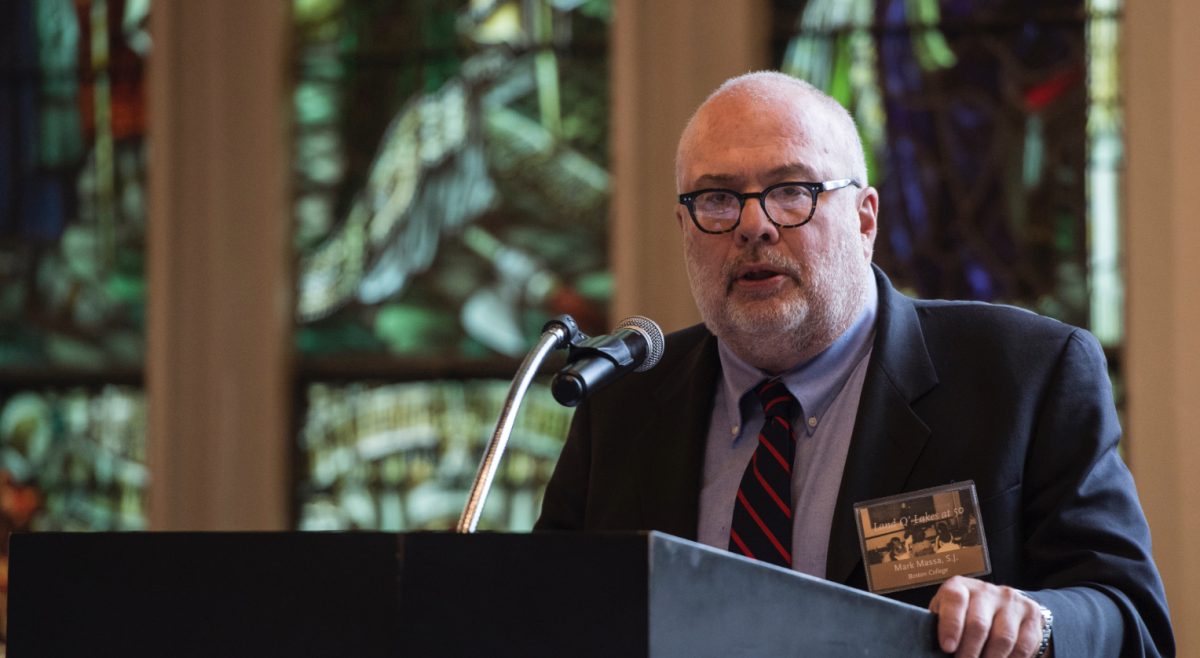In Burns Library there is a kind of time travel—early editions of antebellum works, as their readers first experienced them, said Paul Lewis, head curator of the most recent addition to the Burns Exhibits, Nathaniel Hawthorne and Frederick Douglass: Texts and Context. The exhibit opened in the Burns Library on October 15 and will run until Jan. 24, 2016.
The exhibit emphasizes the important role Nathaniel Hawthorne’s The Blithedale Romance (1852) and Frederick Douglass’ The Heroic Slave (1853) played in the social, political, and economic landscape of mid-1800s Boston.
Lewis, also a professor in the english department, believes it is unique to fashion these two seemingly different authors in context with each other.
“Though rarely discussed together, [these works] were published about six months apart by firms on the same block in downtown Boston,” he said in an email. “Each of the works occupies an important place in the evolution of American thought and writing.”
The collection includes first and early editions of work by Douglass and Hawthorne as well as by Louisa May Alcott, T. S. Arthur, Lydia Maria Child, W. E. B. DuBois, Ralph Waldo Emerson, Olaudah Equiano, Margaret Fuller, Harriet Jacobs, Henry Wadsworth Longfellow, Elizabeth Palmer Peabody, Harriet Beecher Stowe, Henry David Thoreau, David Walker, Booker T. Washington, and Phillis Wheatley.
The inspiration for this project came from the work of Lewis’ undergraduate seminar on literary Boston, during the spring semester of 2015. Discussions in the seminar centered on the works of Douglass and Hawthorne and analyzed their individual and collaborative depictions on issues such as feminism, anti-slavery, and political tensions central to the time period in which they were written.
Lewis has been responsible in executing exhibits at the Boston Public Library and was also highly involved in getting an Edgar Allan Poe statue implanted in downtown Boston last year.
Lewis attributes much of the initial work behind the exhibit to Boston College undergraduate student researchers Salvatore Berger, Samantha Breen, LSOE ’16, John Carey, MCAS ’16, Shari Dryden, MCAS ’16, Felicia Figueiredo, Justin Kresevic, MCAS ’16, Natasha Lopez, Ingrid Marquardt, MCAS ’16, Adriana Olaya-Pineda, MCAS ’16, Steve Wagner, and Mary Yuengert, MCAS ’16.
In addition, he emphasized the work of associate curator of the project, Scott Reznick, a professor and doctoral candidate in the English department.
“I think [this exhibit] can help people reflect on our own current moment, and the issues that we face and how solutions are often difficult, but that does not mean we should not engage with them as both of these writers did,” Reznick said.
The advanced topics seminar required the students to track down contextual pieces related to several main contextual elements, including the author’s lives and works, abolition, representations of the heroic, and African American literature. Students explored the Burns library for pieces from the era, and also reached out to other libraries for various elements of the display.
At several points in the semester, the students presented their findings in relation to the text for Lewis and Reznick to critique. At the end of the semester, each student contributed two to three objects to the exhibit. Labels for each piece inform the public of its importance. Each student also wrote an analytical paper that incorporated his or her research discoveries.
“Having the exhibit at the end was incredibly motivating,” Olaya-Pineda said. “The exhibit is the culmination of all of our research and all the hard work we put in over the semester and to connect our reading with history and with Boston.”
The physical layout of the exhibit highlights the contextual categories of the research completed in a practical manner. The design of each object’s label, context boards, and informational posters were a collaborative effort among Lincoln, Reznick, and several graduate students in the English department. Reznick hopes that the public comes away with an appreciation for the complexities of every historical moment.
“The 1840s and 1850s were a time of immense reform activity and Boston was the hub of it,” Reznick said. “Boston, in a lot of ways, has always been at the forefront for pushing for radical change, and here in the exhibit you can see some of the founding documents of this.”
Featured Image by Josh Mentzer / Heights Staff








